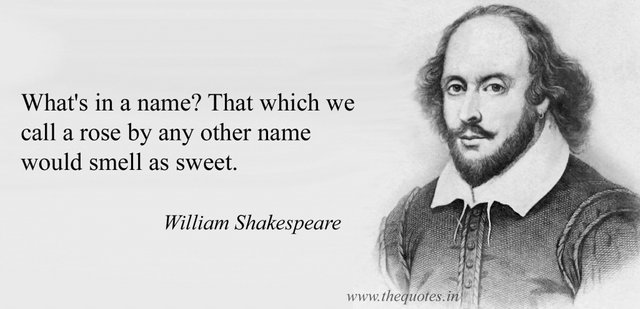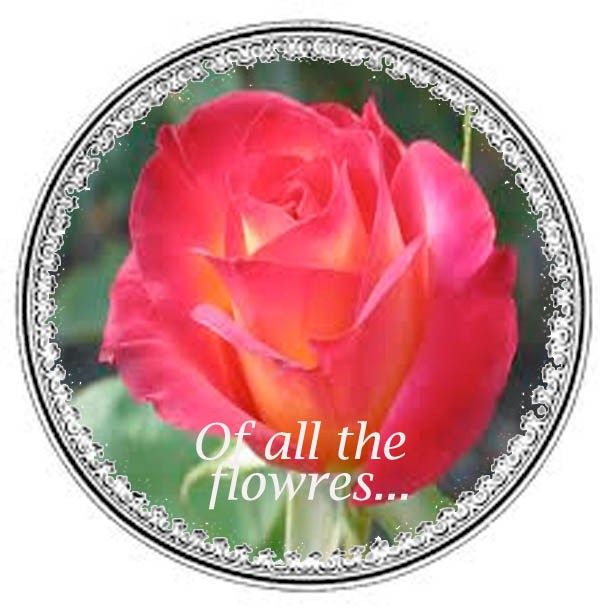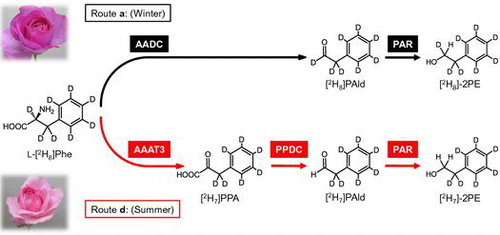Floral Scent - Part 4

“What’s in a name? That which we call a rose by any other name would smell as sweet.” Image from: William Shakespeare Quotes
This post is a continuation of my earlier posts: Floral Scent - Part 1, Floral Scent - Part 2 and Floral Scent - Part 3. The focus of this post will be roses. I thought I would begin this post with a bit of history from an Englishman's perspective:
Historical perspective
William Shakespeare was clearly fond of roses, and many of his plays made reference to them: "Shakespeare refers to the Rose over 70 times; it is the most mentioned flower throughout his work. The varieties of Rose he mentions include the Musk Rose (Rosa moschata), the Damask Rose (Rosa damascena), the Eglantine or Sweet Briar (Rosa rubiginosa), the Provence or Cabbage Rose (Rosa centifolia) and the Wild Dog Rose (Rosa canina)." (Shakespeare Roses):
e.g.
“What’s in a name? That which we call a rose
By any other name would smell as sweet.”
(Romeo and Juliet, Act II, Scene II)
“The rose looks fair, but fairer we it deem
For that sweet odour which doth in it live.”
(Sonnet 54)
"Of all flowers
Methinks a rose is best."
(Two Noble Kinsmen, Act II, Scene II)

Image from: Shakespeare Roses
He was clearly referring to the "sweet smell" of roses, although it has been speculated that in Romeo and Juliet, which was performed in the Rose Theatre (a local rival to his Globe Theatre), Shakespeare may have been subtly referring to the "less than effective sanitary arrangements" at the Rose Theatre! (The meaning and origin of the expression: A rose by any other name would smell as sweet).
It should be noted that William Shakespeare (1564 (baptised) – 1616) wrote many of his plays and sonnets during the reign of Elizabeth 1 of England (Elizabeth Tudor) (1533 - 1603), daughter of Henry VIII and Anne Boleyn. Shakespeare produced most of his known work between 1589 and 1613 (William Shakespeare). Romeo and Juliet was written in 1594-1595. Sonnet 54 was written sometime between 1590 and 1595. The Two Noble Kinsmen was probably written and performed between 1613 and 1614.
The Tudor dynasty began following the "Wars of The Roses", a civil war fought between supporters of two English rival branches of the royal House of Plantagenet: the House of Lancaster (associated with a red rose), and the House of York (whose symbol was a white rose) (Wars of the Roses - Wikipedia). The wars ended when Henry Tudor, Earl of Richmond (House of Lancaster) defeated the last Yorkist king, Richard III, at the Battle of Bosworth Field in 1487. After assuming the throne as Henry VII, Henry Tudor married Elizabeth of York, the eldest daughter and heir of Edward IV, thereby uniting the two claims to the throne. The House of Tudor ruled the Kingdom of England until 1603, with the death of Elizabeth I, granddaughter of Henry VII and Elizabeth of York.
The unification of the country was symbolized by the "Tudor Rose" which combined The Red Rose of Lancaster, and The White Rose of York in a single badge. (House of Tudor - Wikipedia):

Tudor Rose. Image from: House of Tudor - Wikipedia
No doubt William Shakespeare's fondness for roses was influenced by these historical events leading to his beloved queen's reign.
Economic value of roses
"For centuries, rose has been the most important crop in the floriculture industry. The genus Rosa includes 200 species and 18,000 cultivars. At an annual value of about $10 billion, roses are used as cut flowers, potted plants, and garden plants. Their economic importance also lies in the use of their petals as a source of natural fragrances and flavorings. The damask rose (Rosa damascena) is the most important species used to produce rose water, attar of rose, and essential oils in the perfumery industry." (Guterman et al. (2002)).
About $2 billion is spent annually on flowers for Valentine's Day in the USA alone, and most of these flowers are roses. Over 250 million roses are produced for this holiday, mostly in S. America (Valentine's Day by the numbers: See how much money is spent on flowers, candy and cards, The forces that drive the price of a bouquet of roses (and the best time to order one for Valentine's Day)).
Recent research on rose scent
Like snapdragon (see Floral Scent - Part 3) rose produces different compounds representing the three main pathways — benzenoids/phenylpropanoids, terpenoids/isoprenoids and fatty acid derivatives (Guterman et al. (2002)), and as in Antirrhinum there are pronounced species and varietal differences within the Rosa genus. A comparison between cultivars Fragrant Cloud (FC) and Golden Gate (GG) of tetraploid Rosa hybrida vividly illustrates the latter point. The large red FC flowers possess a strong scent, accumulate anthocyanins, and have a short vase life, whereas the small yellow flowers of GG accumulate carotenoids, have a long vase life, and lack a distinct odor (Guterman et al. (2002)). "FC flowers emit numerous fragrance compounds known in roses, including aromatic alcohols, monoterpenes, sesquiterpenes, and various esters. Conversely, flowers of GG emit almost exclusively methoxylated phenols (99% of total volatiles)" (Guterman et al. (2002)). These contrasting rose cultivars led to the discovery of several novel flower scent–related candidate genes (Guterman et al. (2002)).
One of the most prominent compounds in the floral volatiles of many rose varieties is the methoxylated phenolic derivative 3,5-dimethoxytoluene (orcinol dimethyl ether). O-Methyltransferases (enzymes that add methyl groups to -OH groups on the phenyl ring) involved in the biosynthesis of these and other volatile phenolic derivatives in rose petals have now been characterized (Lavid et al. (2002), Scalliet et al. (2008)).
2-Phenylethanol (2-PE) is also a major constituent of rose scent. As in petunia, 2-phenylethanol is formed from phenylacetaldehyde in roses (Karami et al. (2015)). Whereas Petunia produces phenylacetaldehyde from phenylalanine by a single enzyme, phenylacetaldehyde synthase (PAAS) (Kaminaga et al. (2006)), rose appears to produce phenylacetaldehyde via the catalytic action of an L-aromatic amino acid decarboxylase (AADC) in a single step (Sakai et al. (2007), AND by a phenylpyruvic acid (PPA) decarboxylase (PPDC) (Hirata et al. (2016)). The latter pathway is seasonally induced in summer as a heat adaptation (Hirata et al. (2016a), Hirata et al. (2016b)).

Seasonal changes in the production of 2-phenylethanol and its biosynthetic pathways. Image from: Hirata et al. (2016a)
Much as in petunia (Floral Scent - Part 2) genome sequencing of rose ancestors is shedding a great deal of new light on key genes that determine both rose color and scent (Nakamura et al. (2017)). This field of research continues to blossom!
Please feel free to comment or ask questions about this post in the comments section below. I will try to answer questions as soon as possible.
Congratulations @davidrhodes124! You have completed some achievement on Steemit and have been rewarded with new badge(s) :
Click on any badge to view your own Board of Honor on SteemitBoard.
To support your work, I also upvoted your post!
For more information about SteemitBoard, click here
If you no longer want to receive notifications, reply to this comment with the word
STOPThank you!